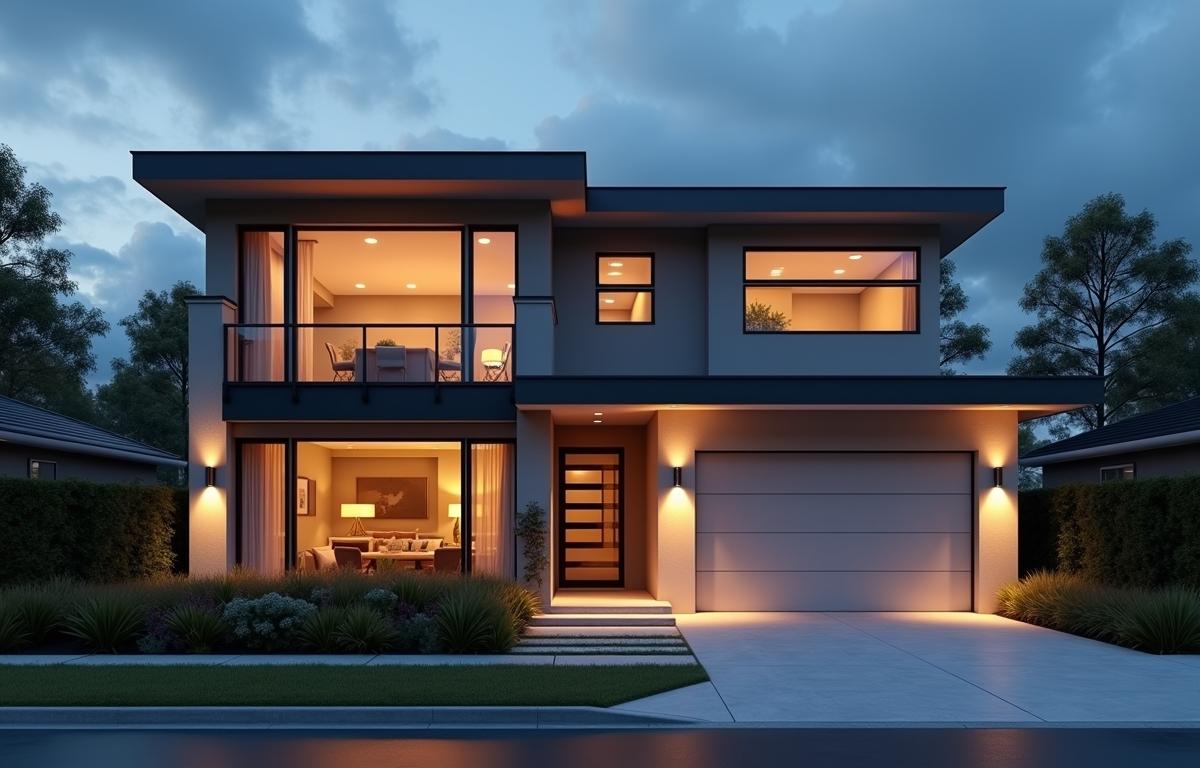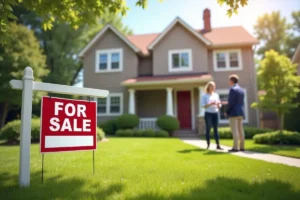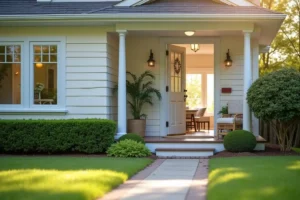The Future of Home Security: AI and Automation
Technological advancements are gradually reshaping home security through AI and automation. Many households have already replaced basic door alarms and simple cameras with intelligent devices that learn daily patterns and adapt to unusual activity. This progression is fueled by powerful tools like artificial intelligence, which takes everyday solutions and amplifies them into robust security measures. From facial recognition to automated alerts, these advancements aim to provide peace of mind without forcing homeowners to become tech experts or spend countless hours on setup. Change is happening quickly, sparking the question of what tomorrow’s protective landscape will truly look like.
While it’s tempting to think these cutting-edge systems are only for the tech-savvy, the latest security options are actually designed to be accessible and intuitive. You no longer have to be a specialized engineer to notice the difference between an intruder’s footsteps and your dog’s late-night wanderings across the living room. AI-enabled sensors gauge motion and noise levels, and automation streamlines everything from locking your doors to switching off lights when no one’s home. By taking advantage of these innovations, individuals gain the kind of reliability that makes them feel safe the moment they step through the front door.
A New Era of Smart Home Protection
A distinctive shift is happening, one that rethinks how we approach everyday safety. Devices equipped with advanced recognition features can now differentiate a friend coming by for dinner from a stranger creeping onto the porch. The thinking behind this technology is to create systems that learn from ongoing activity and adapt accordingly. It’s not just about improving cameras it’s about delivering more comprehensive awareness of what goes on inside and outside the house.
Why AI Matters for Home Safety
Some people are hesitant about trusting algorithms to watch over their personal space, but AI serves as the silent guard in the background. It quickly singles out odd or suspicious events and sends immediate notifications to your phone. That translates to real-time responses, less guesswork, and the confidence of knowing that your system is always on the lookout. Over time, these systems become more accurate because they learn what “normal” looks like in a household.
Automation That Transforms Daily Security Routines
Automation equips you with straightforward, hands-off ways to keep your property secure. Sensors identify the difference between a cat strolling through the yard and a potential intruder, while automated lights track movement to help ward off anyone with questionable intentions. These features make it easy to maintain a safe environment, whether you’re present or traveling on a long vacation. For example, doors can lock themselves at a set time, or windows can close automatically when certain weather conditions hit.
Even small routines can bring big advantages once a smart system steps in. Let’s say you’re on your way to work and can’t remember if you locked the back door. With an automated security network, you can check from an app and secure your home in seconds. In many cases, you’ll also have the option of receiving video feeds in real time. This combination of convenience and control is changing how we picture day-to-day home protection, effectively lessening vulnerabilities without piling on extra stress.
From Scheduled Tasks to Intuitive Responses
Initially, automation used to be as simple as scheduling lights to come on at a certain hour. Now, the move toward AI-infused functionality allows systems to predict patterns and make decisions. If a window is left open during a severe storm, you’ll get an alert prompting you to shut it or the system might close it for you. Such intuitive actions save time and minimize the worry that comes from juggling safety tasks.
Enhancing Privacy and Data Protection
Introducing more devices into your living space naturally raises concerns about privacy. While security cameras and facial recognition tools offer enormous benefits, nobody wants to feel constantly watched or have personal data sold to advertisers. It’s important to look for solutions that offer encryption and secure data storage, ensuring whatever information is gathered or analyzed remains confidential. This is where reading the fine print and checking the product’s privacy credentials make a difference.
Security in a high-tech home involves more than just physical barriers. Software threats exist too, with cybercriminals aiming to exploit weak links. Being cautious about who has access to your network, using strong passwords, and updating firmware are basic measures that make a huge dent in potential breaches. Although it may feel like an added chore, these steps help homeowners strike a balance between enjoying the wonders of modern home monitoring and safeguarding their personal information.
Balancing Convenience with Security
A fully integrated home system should allow you to relax, not add tension every time you think about data privacy. Investigating how a manufacturer handles sensitive details is just as crucial as testing the camera’s image quality. Many brands now emphasize transparent user agreements and provide end-to-end encryption to limit any data snooping. By vetting products carefully, you’ll have a tailor-made solution that delivers peace of mind without compromising your family’s privacy.
Combining AI with Human Expertise
Artificial intelligence can perform an impressive range of tasks, yet it’s not here to replace human insight. Rather, think of technology as an extra layer of protection that works alongside experienced professionals. With AI sifting through hours of surveillance footage, security experts can concentrate on verifying risks and responding quickly when necessary. This synergy reduces the chance of human error and ensures that each alert receives the attention it deserves.
Human innovation fuels new solutions too. Consider developments in voice recognition that authenticate who’s speaking at your front door, or smart sensors that monitor air quality to detect fires more rapidly. Security engineers build these features to complement our inherent instincts, not compete with them. The more advanced the systems become, the better they can work alongside us to achieve a safer, more comfortable environment.
The Role of Professionals in Modern Home Security
While do-it-yourself installations have flourished, professional security providers still bring a valuable perspective. They offer specialized experience, whether it’s setting cameras at optimal angles or implementing solutions for challenging layouts. Teams keep an eye on your system 24/7, adding a layer of reassurance if you’re too busy or away from home for long periods. With clear collaboration between homeowner and professional, your guard never drops, even if your phone battery does.
Shaping Tomorrow’s Safer Living Spaces
Constant innovation means the future will likely welcome smarter sensors, more seamless integration between devices, and evolving applications of artificial intelligence. Imagine sensors in your walls that track structural stability, or predictive systems that note changes in weather patterns and reinforce storm shutters accordingly. As homes become more intertwined with the digital realm, the concept of home security morphs into a broader perspective that covers health, environment, and personal well-being.
Developers of these cutting-edge solutions aim to remove complexity while expanding functionality. Even those who shy away from complicated interfaces can benefit from automated routines. Alerts that used to be limited to text messages are now becoming interactive, giving you more control over how you respond. The continuous march of progress points to systems that fit seamlessly into any lifestyle, providing an extra cushion of safety without intruding on daily life.
Practical Steps to Embrace Future Solutions
If you’re looking to upgrade or integrate new technologies, start by evaluating what makes sense for your property’s specific needs. Not every house requires complex motion-tracking lasers or biometric locks on every entrance. Think about the areas that matter most perhaps the driveway, backyard, or your front porch. From there, try combining automation with an AI-driven monitoring system for robust coverage. A measured approach keeps technology from becoming overwhelming and gives you time to adjust to features as you add them.
Making an informed decision means researching brand reputation, checking user reviews, and ensuring that updates and patches are regularly provided. Look for platforms that accommodate growth, allowing you to add components like automated lighting or a more advanced doorbell camera down the line. It’s also worth reaching out to professionals who can advise on specialized hardware and help tailor solutions. Small, intentional steps today can pave the way for a safer tomorrow, where intelligent systems take care of the granular details and free you to enjoy life’s moments more fully.







0